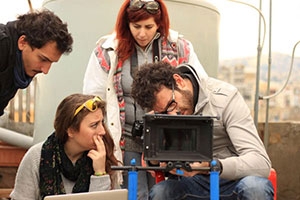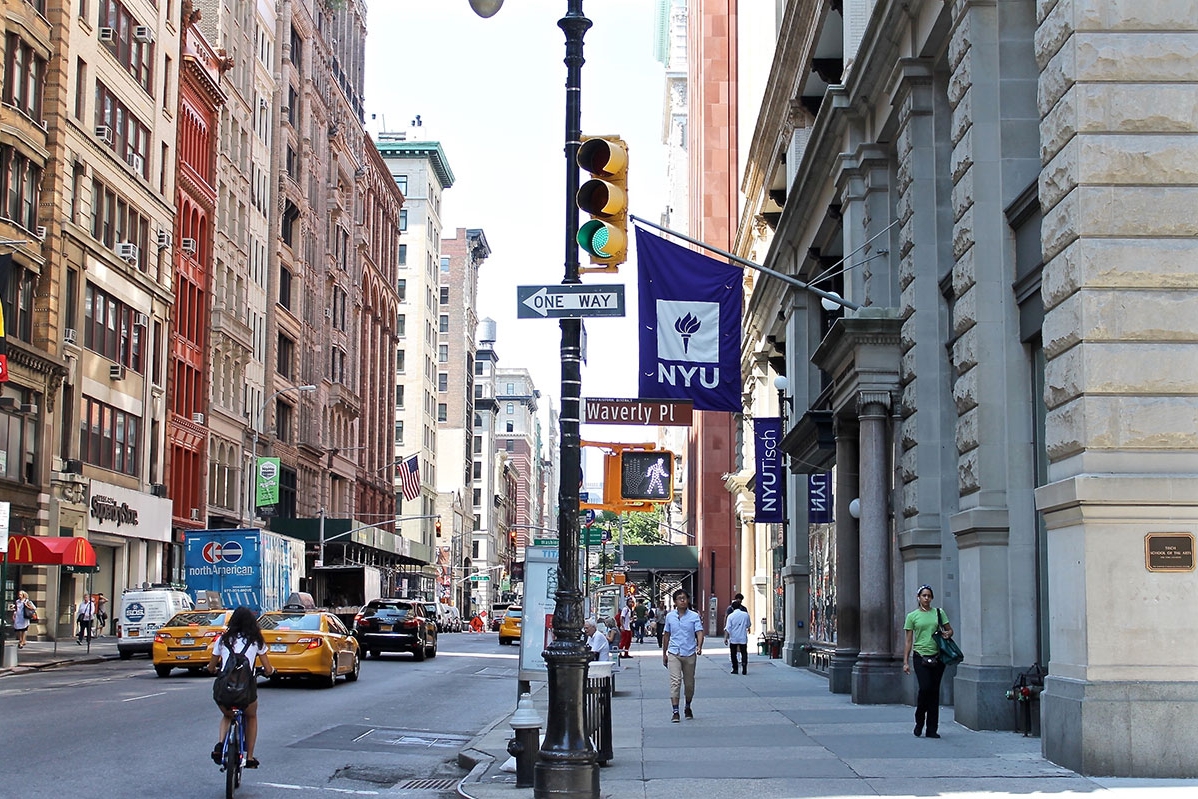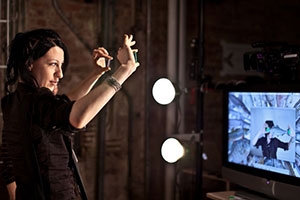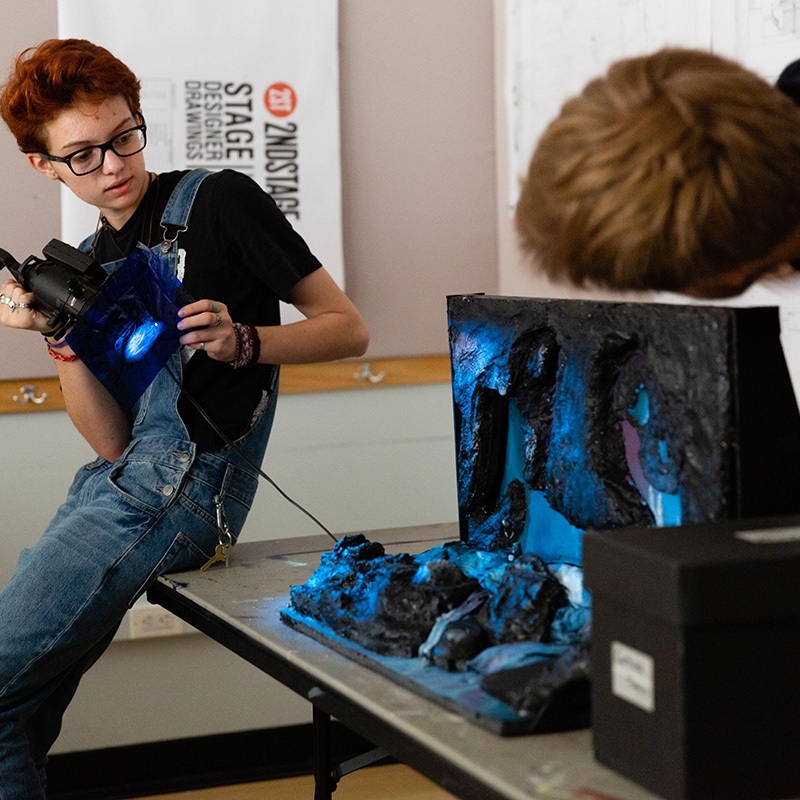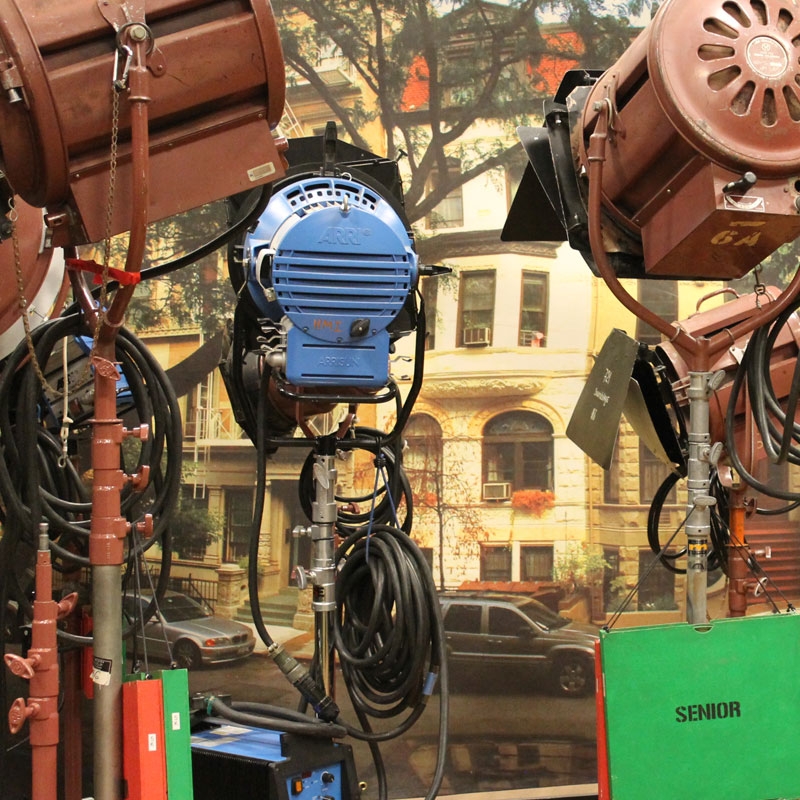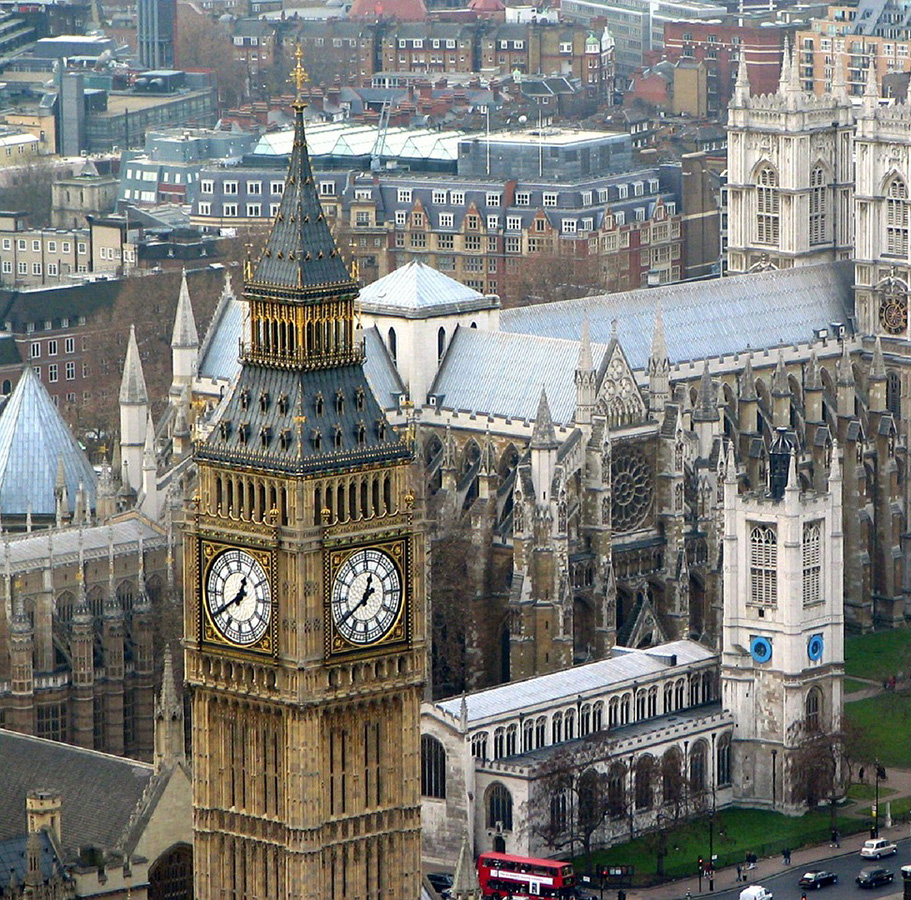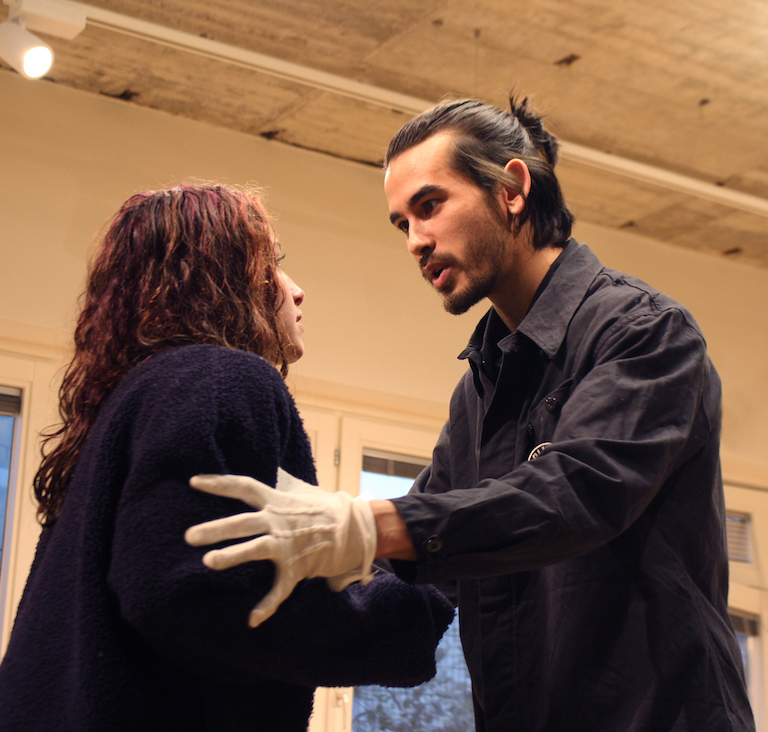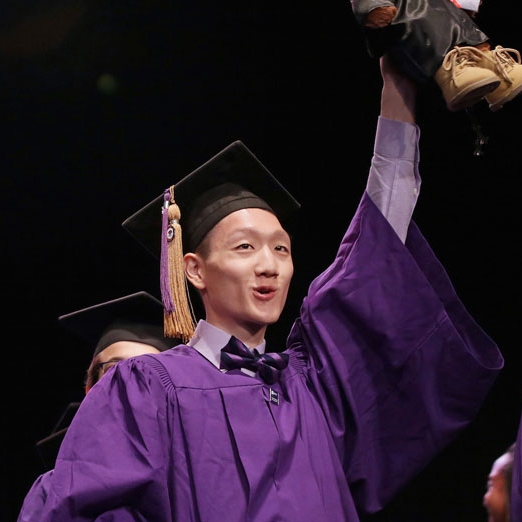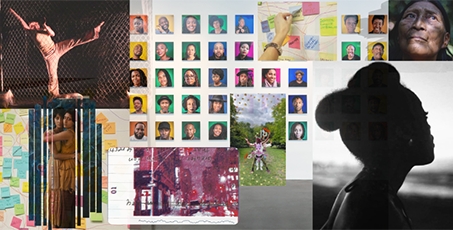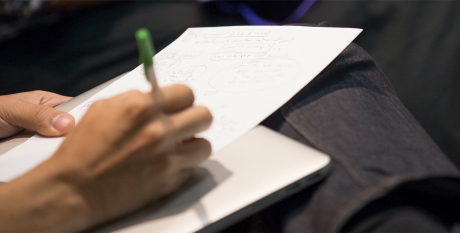Program Overview
The Collaborative Arts BFA is a course of study designed for a diverse group of versatile, curious, and enterprising undergraduates. We value creative cooperation, theoretical rigor, hands-on experimentation and radical revision. We prioritize process as a method of self-discovery and often encourage our students to try before they completely understand how or why.
Students in the Collaborative Arts BFA are required to practice and learn a variety of art disciplines and are expected to emerge as multidisciplinary artists and performers. They are seeking a curriculum that emphasizes breadth, integrates theory with practice and rewards the artist who is able to dream up projects and work with others to realize them. The Collaborative Arts BFA appeals to students who are passionate about working in the arts across disciplines.
First Year Core Curriculum (24 Credits)
Our first year core curriculum introduces students to the fundamentals of performance, movement and acting, visual art and filmmaking, emerging media and technology, music production, fabrication, playwriting, screenwriting, and art theory. All of the courses below are required:
"I came into Collaborative Arts with an idea of what art I was best in and ended the year with an entirely new opinion on who I was. Be open to learning new things and thriving in those new things."- Birdie Le'au
Artistic Practice Electives (36 Credits)
After the first year core curriculum, students move onto higher-level interdisciplinary coursework and become immersed in our expansive program electives across our core areas: image, performance, writing, music/sound, emerging media/technology, and research/studies.
Expanded Core Curriculum (8 Credits)
Throughout the years, Jam House brings together the entire BFA for weekend-long intensive art jams and productions.
After beginning an array of artistic practice electives in sophomore year, students begin junior year with an expanded interdisciplinary workshop, Body Library, to engage with exciting guest artists and further prepare for their final thesis project in senior year.
Liberal Arts Requirements (32 Credits)
Every NYU student is required to complete a liberal arts core curriculum alongside of their primary major. For Collaborative Arts, the liberal arts requirements are as follows:
Minors
Students majoring in Collaborative Arts can also choose to complete a minor as part of their degree. Minors can be in the humanities, social sciences, languages, or other arts (subject to policies governing minors in those respective departments). To learn more about minors that are offered through Tisch, please visit Tisch Minors. Examples of minors offered outside of Tisch include: Psychology; The Business of Entertainment, Media, and Technology; Art History; Journalism; and many more.
Study Abroad
At Tisch we believe that global and cultural awareness is critical to education and personal development. The Collaborative Arts B.F.A. encourages students to study abroad while completing their degree. The curriculum is designed to allow students to spend a semester (or an entire year) abroad while earning core, general education or elective credits. Visit NYU Study Abroad or Tisch Special Programs to learn more about study abroad opportunities at NYU.
